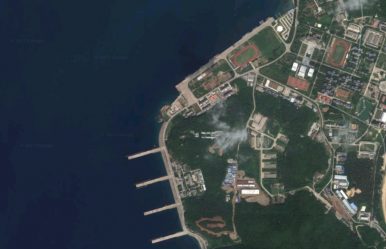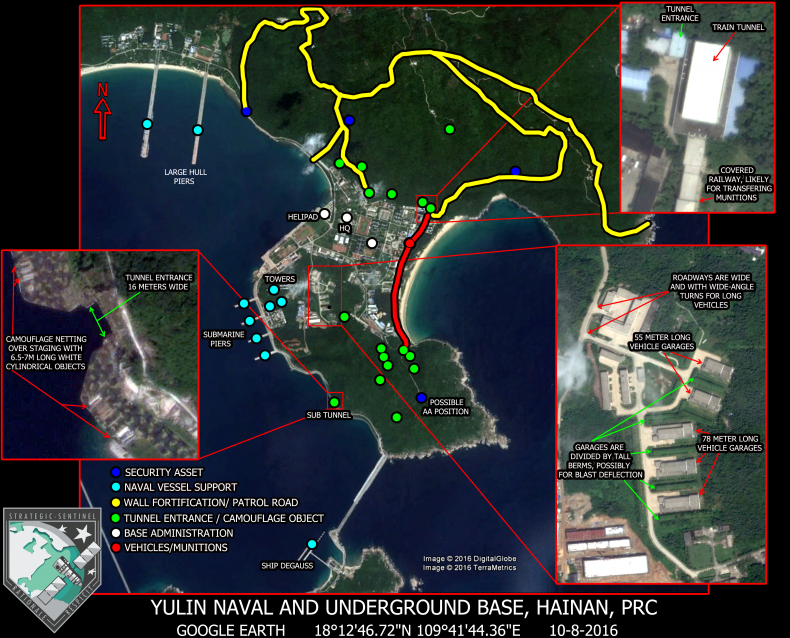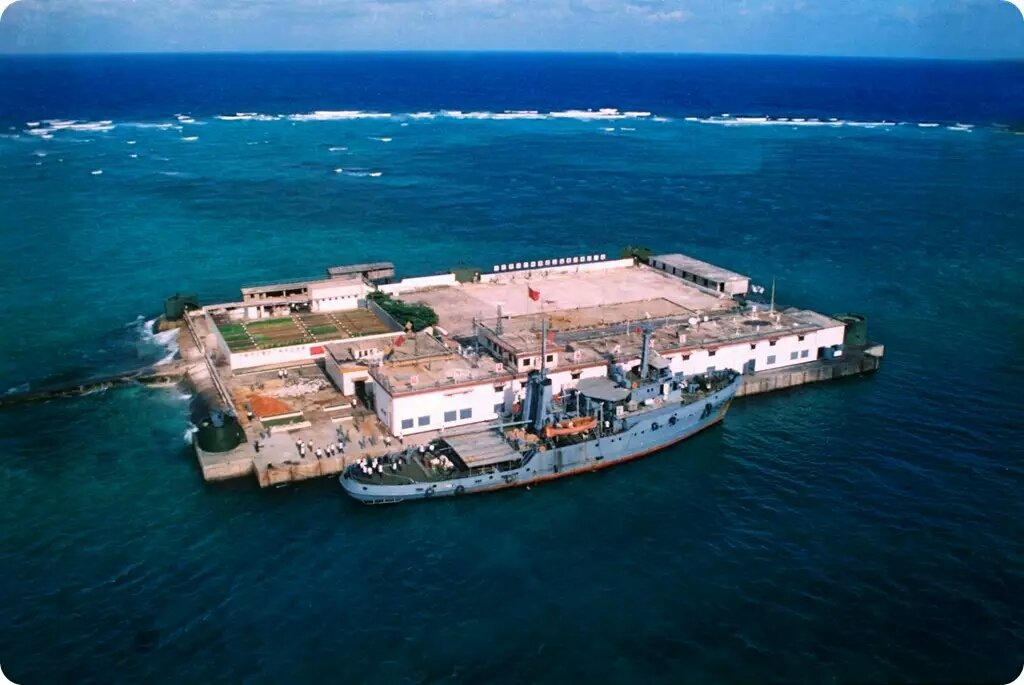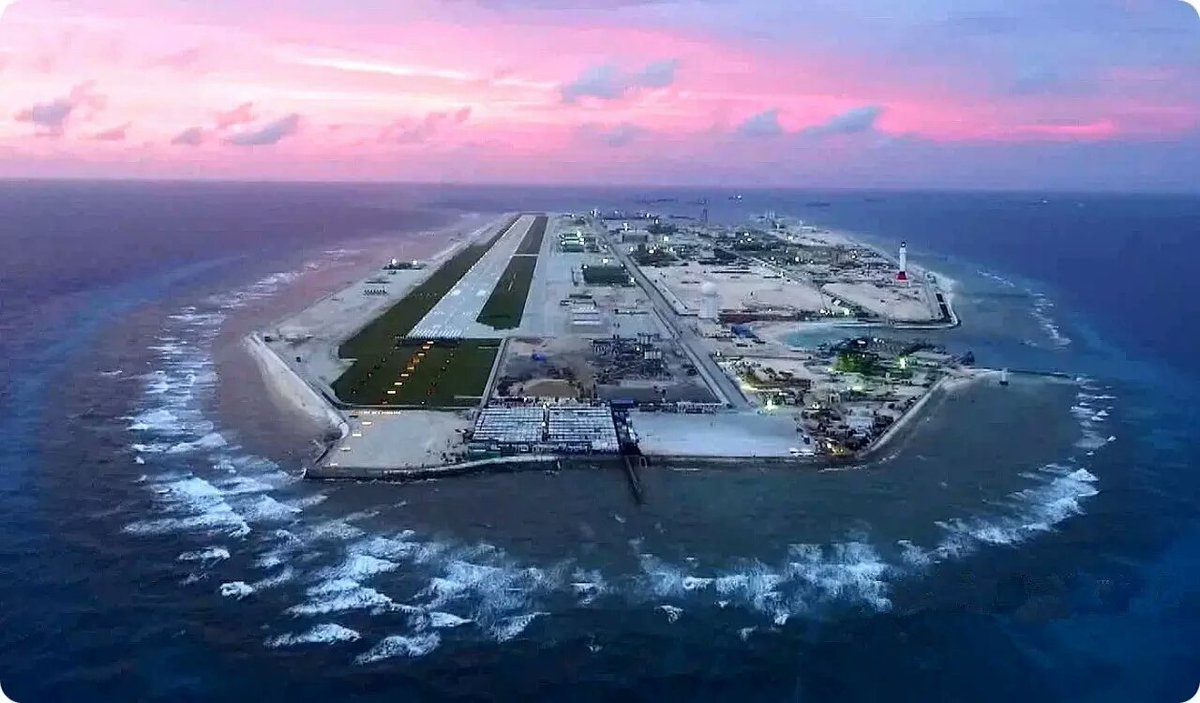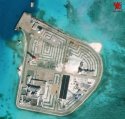Hendrik_2000
Lieutenant General
From global times imagine surfing on fiery Island 
Only Mainlander are allowed!. Foreigner need not bother to visit
S. China Sea popular with patriotic tourists, experts predict greater visitor numbers in future
By Li Ruohan Source:Global Times Published: 2017/3/12 17:18:39
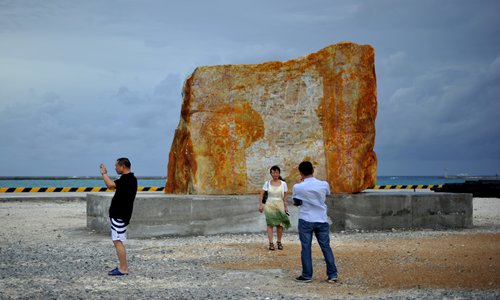
Visitors take pictures in front of a monument on Yongxing Island erected to mark the founding of Sansha city. Photo: CFP
South China's Sansha city, which administers some of the Xisha Islands in the South China Sea, including some disputed islets, is planning to expand the local tourism industry by providing more fishing and diving services, the city's mayor said.
More than 20,000 tourists have had the chance to sample Sansha's remarkable scenery since cruises started heading to the region in 2013, Xiao Jie, mayor and Party chief of Sansha, told the media during the ongoing annual session of China's top legislature, the National People's Congress.
Sansha has drafted a tourism development plan, Xiao was qouted by the Xinhua News Agency as saying on Wednesday.
Though visiting Sansha is still mostly chosen by small groups of people, due to relatively high travel costs, the region has great potential which simply requires further infrastructure development, local tour guides told the Global Times on Thursday.
Meanwhile, as many visitors to Sansha come for patriotic purposes, the region will likely enjoy a greater number of tourists after it opens up more and more attractive sites in the South China Sea, said Chen Xiangmiao, a research fellow at the Hainan-based National Institute for South China Sea Studies.
A bite of the sea
Currently, tourists can only visit Sansha via three cruise services. The routes they offer will be expanded and there will be more travel products in future, said Xiao.
The Changle Princess, Beibuwan No.1 and "The dream of the South China Sea" are currently in service, and these three boats as well as the now-retired Coconut-fragrance Princess, have taken more than 20,000 tourists on over 120 voyages to Sansha since 2013, according to the Sansha government's website.
A five-day cruise from Sanya, South China's Hainan Province, to Sansha, starts from 4,780 yuan ($691).
Sansha's peak tourist season starts around Spring Festival and runs until May, when temperatures in the region are relatively high, Zhao Xinbo, a tour guide at Hainan Air International Travel Agency, told the Global Times.
Diving, fishing and photography are the most popular activities, said Zhao.
A typical trip includes fishing, a journey to the Dragon Hole scenic spot, and visiting the islands of Yagong, Quanfu and Yinyu, the only three that Xiao said are currently open to tour groups.
In the future, more islands will be opened, Xiao explained. For instance, infrastructure on Zhaoshu Island and Jinqing Island is under construction and the two islands will soon be able to host travelers, Xiao added.
Cruises are the ideal industry for Sansha's development, said Xiao, explaining that as travelers eat and stay on the cruise ship, and almost all of their recreational activities are also held on the ship, visitors' fun will not have too much of an impact on Sansha's ecology.
However, such tourist services are only open to residents of the Chinese mainland, meaning foreigners, overseas Chinese and those from Taiwan, Hong Kong and Macao cannot enjoy Sansha.
Experts say this ban was introduced as tourist development should not compromise the military confidentiality of the Xisha Islands.
China has deployed its military on the Xisha Islands, and has held military drills in the region, Xinhua reported.
Moreover, those who have criminal records cannot sign up for those trips, said Zhao, adding that the cruise registration system is connected to the public security system.
Some travel agencies, including leading online agency Tuniu, also exclude those who have published comments online that are regarded as "inciting subversion of State power," and those who spread "reactionary ideologies."
Patriotic trip
Apart from its scenery, many visitors chose the city that administers disputed islands for patriotic reasons, Chen told the Global Times.
Some travel agencies even market the cruise as a "patriotic trip."
According to itineraries released on online booking platforms such as Tuniu and Ctrip, the first thing listed in visitors' schedules after they arrive in Sansha is a flag-raising ceremony followed by singing the national anthem.
According to Xiao, patriotic education and maritime protection education are both included in the schedules of visitors to the Xisha region.
"When I arrived on the island and saw the lives of local residents, the feeling of protecting the land was overwhelming and it lasted all through the trip," a tourist wrote on Tuniu's website in January. Such comments can also be found on other online booking platforms.
Newspaper headline: Sailing in Sansha
Only Mainlander are allowed!. Foreigner need not bother to visit
S. China Sea popular with patriotic tourists, experts predict greater visitor numbers in future
By Li Ruohan Source:Global Times Published: 2017/3/12 17:18:39

Visitors take pictures in front of a monument on Yongxing Island erected to mark the founding of Sansha city. Photo: CFP
South China's Sansha city, which administers some of the Xisha Islands in the South China Sea, including some disputed islets, is planning to expand the local tourism industry by providing more fishing and diving services, the city's mayor said.
More than 20,000 tourists have had the chance to sample Sansha's remarkable scenery since cruises started heading to the region in 2013, Xiao Jie, mayor and Party chief of Sansha, told the media during the ongoing annual session of China's top legislature, the National People's Congress.
Sansha has drafted a tourism development plan, Xiao was qouted by the Xinhua News Agency as saying on Wednesday.
Though visiting Sansha is still mostly chosen by small groups of people, due to relatively high travel costs, the region has great potential which simply requires further infrastructure development, local tour guides told the Global Times on Thursday.
Meanwhile, as many visitors to Sansha come for patriotic purposes, the region will likely enjoy a greater number of tourists after it opens up more and more attractive sites in the South China Sea, said Chen Xiangmiao, a research fellow at the Hainan-based National Institute for South China Sea Studies.
A bite of the sea
Currently, tourists can only visit Sansha via three cruise services. The routes they offer will be expanded and there will be more travel products in future, said Xiao.
The Changle Princess, Beibuwan No.1 and "The dream of the South China Sea" are currently in service, and these three boats as well as the now-retired Coconut-fragrance Princess, have taken more than 20,000 tourists on over 120 voyages to Sansha since 2013, according to the Sansha government's website.
A five-day cruise from Sanya, South China's Hainan Province, to Sansha, starts from 4,780 yuan ($691).
Sansha's peak tourist season starts around Spring Festival and runs until May, when temperatures in the region are relatively high, Zhao Xinbo, a tour guide at Hainan Air International Travel Agency, told the Global Times.
Diving, fishing and photography are the most popular activities, said Zhao.
A typical trip includes fishing, a journey to the Dragon Hole scenic spot, and visiting the islands of Yagong, Quanfu and Yinyu, the only three that Xiao said are currently open to tour groups.
In the future, more islands will be opened, Xiao explained. For instance, infrastructure on Zhaoshu Island and Jinqing Island is under construction and the two islands will soon be able to host travelers, Xiao added.
Cruises are the ideal industry for Sansha's development, said Xiao, explaining that as travelers eat and stay on the cruise ship, and almost all of their recreational activities are also held on the ship, visitors' fun will not have too much of an impact on Sansha's ecology.
However, such tourist services are only open to residents of the Chinese mainland, meaning foreigners, overseas Chinese and those from Taiwan, Hong Kong and Macao cannot enjoy Sansha.
Experts say this ban was introduced as tourist development should not compromise the military confidentiality of the Xisha Islands.
China has deployed its military on the Xisha Islands, and has held military drills in the region, Xinhua reported.
Moreover, those who have criminal records cannot sign up for those trips, said Zhao, adding that the cruise registration system is connected to the public security system.
Some travel agencies, including leading online agency Tuniu, also exclude those who have published comments online that are regarded as "inciting subversion of State power," and those who spread "reactionary ideologies."
Patriotic trip
Apart from its scenery, many visitors chose the city that administers disputed islands for patriotic reasons, Chen told the Global Times.
Some travel agencies even market the cruise as a "patriotic trip."
According to itineraries released on online booking platforms such as Tuniu and Ctrip, the first thing listed in visitors' schedules after they arrive in Sansha is a flag-raising ceremony followed by singing the national anthem.
According to Xiao, patriotic education and maritime protection education are both included in the schedules of visitors to the Xisha region.
"When I arrived on the island and saw the lives of local residents, the feeling of protecting the land was overwhelming and it lasted all through the trip," a tourist wrote on Tuniu's website in January. Such comments can also be found on other online booking platforms.
Newspaper headline: Sailing in Sansha

